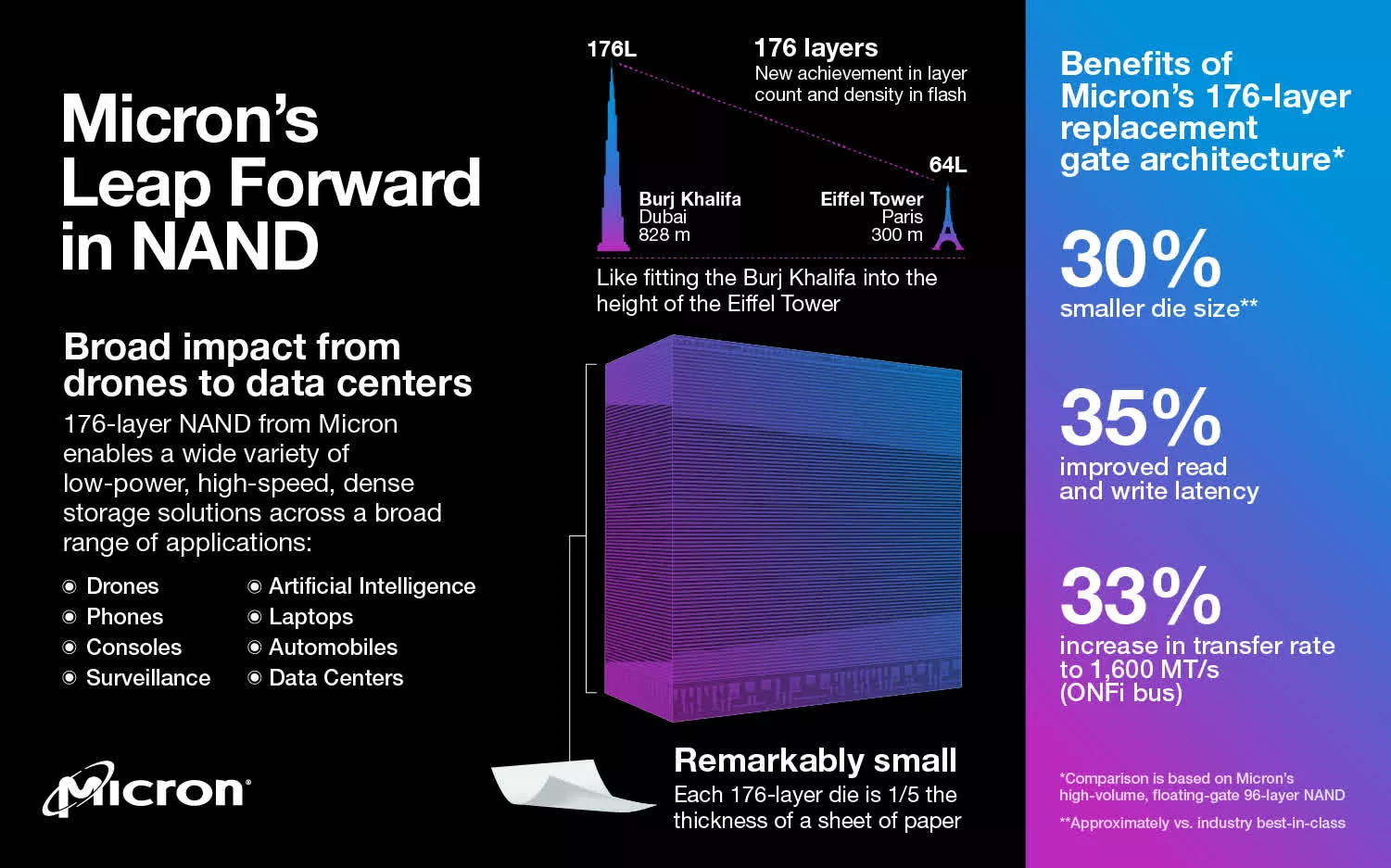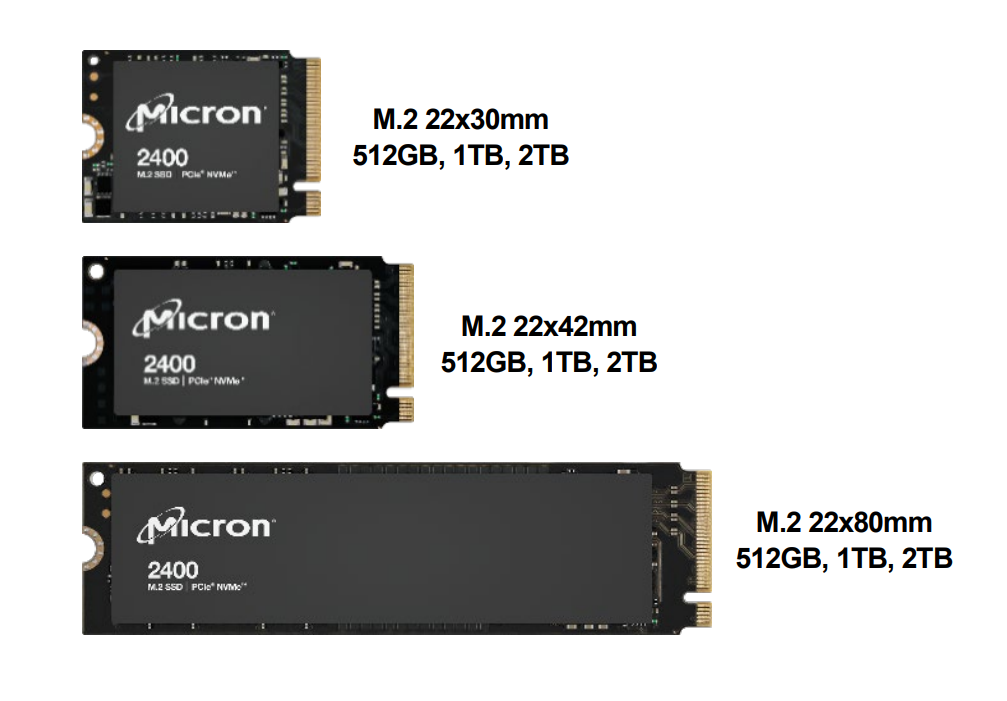What just happened? Micron has started volume shipments of the world’s first 176-layer quad-level cell (QLC) NAND SSD, which it says offers industry-leading storage density and optimized performance. The technology is being used in the Micron 2400 SSD that's available in a tiny 22mm x 30mm drive with a 2TB capacity and 4,500 MBps sequential read speeds.
It was back in November 2020 that Micron first started shipping the world’s first 176-layer 3D NAND flash memory. The company said it expected the technology to find its way into industries such as autonomous vehicles, in-car infotainment systems, and mobile storage, as well as client/data center SSDs.

176-layer 3D NAND is now shipping in Micron’s 2400 series Gen4 QLC SSD, which the company says offers 33% higher I/O speeds and 24% lower read latency than its previous-generation drive featuring 96-layer tech.
Opting for the drive with the highest capacity will get you sequential read speeds of 4,500 MBps and sequential writes of 4,000 MBps. Random reads/writes, meanwhile, are 650K and 700K IOPS, respectively.
Micron offers the M.2 drive in three different form factors: the familiar 22 x 80mm size, 22 x 42mm, and a tiny 22 x 30mm, all in 512GB, 1TB, and 2TB capacities.
The drive offers an endurance of 600 terabytes written (TBW) for the 2TB version, while the 512GB capacity model is 150 TBW. Micron adds that the highest-capacity drive offers idle power consumption of under 150 milliwatts, a reduction of around 50% compared to previous-generation QLC SSDs. It meets Intel’s Project Athena requirements, which require more than nine hours of real-world battery life on laptops, even those using high-definition displays.
Micron says the drive is designed for client applications, such as budget desktops and laptops. Those speeds are far from the 7,000 MBps we see in the top Gen 4 SSDs, but the Micron 2400 SSD is expected to offer excellent value for the capacities available, and the 22mm x 30mm model should enable larger storage options on the smallest of laptops.
https://www.techspot.com/news/92958-micron-starts-shipping-176-layer-qlc-ssd-available.html

